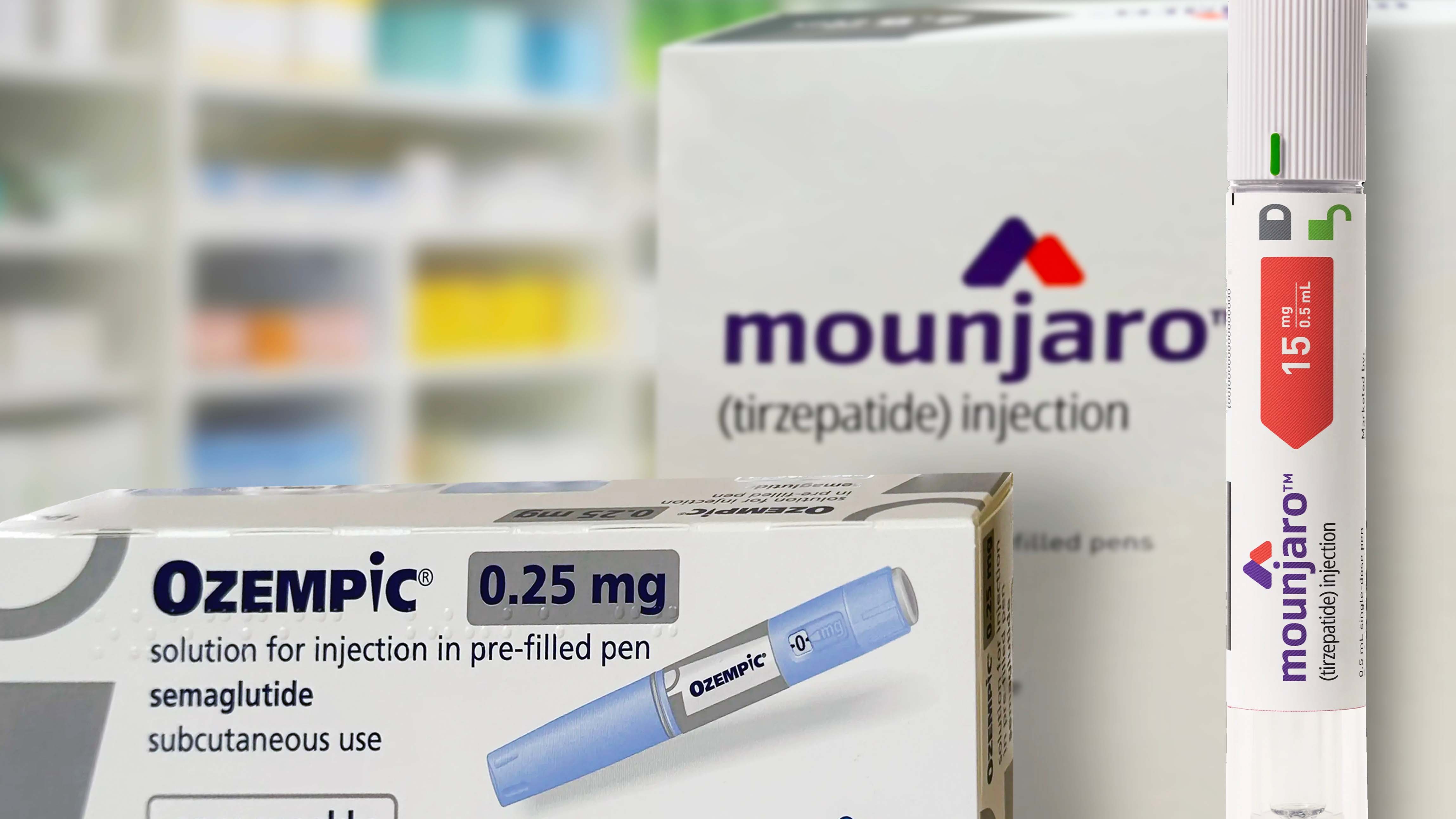Right now, all eyes are on the new COVID variant JN.1, a heavily mutated new strain that has swept the United States in recent weeks. And with the country yet to hit peak respiratory virus season, you can expect to see more cases of the new variant in the coming weeks.
JN.1 is now the fastest-growing variant in the country, according to the U.S. Centers for Disease Control and Prevention. It currently accounts for more than one-fifth of all infections in the U.S.
The HV.1 subvariant is still the dominant strain right now — but JN.1 is not far behind. During the two-week period ending on Dec. 9, HV.1 accounted for about 30% of COVID-19 cases in the U.S., per the CDC’s latest estimates. JN.1 was the second-most prevalent strain, making up about 21% of cases, followed by EG.5.
Scientists are closely monitoring JN.1, which has sparked some concern due to its rapid growth rate and large number of mutations. However, the new variant is closely related to a strain we've seen before. It's a direct offshoot of BA.2.86, aka "Pirola," which has been spreading in the U.S. since the summer.
Get a weekly recap of the latest San Francisco Bay Area housing news. Sign up for NBC Bay Area’s Housing Deconstructed newsletter.
JN.1 has one more mutation compared to its parent strain BA.2.86, which has more than 30 mutations that set it apart from the omicron XBB.1.5 variant. XBB.1.5 was the dominant strain for most of 2023 and it's the variant targeted in the updated COVID-19 vaccine, TODAY.com previously reported.
All of the most prevalent COVID-19 variants in the U.S. right now are descendants of omicron, which began circulating in late 2021.
During the last few weeks, JN.1 has beat out many other variants, including its parental strain BA.2.86 as well as EG.5 or Eris, and XBB.1.16 aka Arcturus.
Health
JN.1's growth comes as COVID hospitalizations rise quickly, influenza continues to spread and RSV activity is still high in many places, according to a Dec. 14 update from the CDC. The agency warned that at the end of the month, emergency rooms and hospitals could become strained, similarly to last year, especially in the South.
Will JN.1 cause a COVID-19 surge? Does JN.1 have different symptoms or is it harder to detect on COVID tests? Does it respond to vaccines and treatments? Here's what experts know about JN.1 so far.
What is JN.1, the new COVID-19 variant?
JN.1 was first detected in September 2023 and it has been detected in at least 12 countries so far, including the U.S., according to the CDC. Just like the other newer variants, JN.1 is part of the omicron family.
"Think of (the variants) as children and grandchildren of omicron. They're part of the same extended family, but they each have their own distinctive personalities," Dr. William Schaffner, professor of infectious diseases at Vanderbilt University Medical Center, tells TODAY.com.
JN.1 descended from BA.2.86, which is a sublineage of the omicron BA.2 variant, TODAY.com previously reported — that's what sets JN.1 and BA.2.86 apart from the other prevailing variants like HV.1 and EG.5, which descended from Omicron XBB.
“When its parent BA.2.86 emerged, everybody was worried because it had a lot of mutations and looked like it was going to evade a lot of the immunity from vaccines and infection population,” Andrew Pekosz, PhD, professor and vice chair in the Department of Molecular Microbiology and Immunology at the Johns Hopkins Bloomberg School of Public Health, tells TODAY.com. “But (BA.2.86) sort of fizzled out,” Pekosz adds.
Laboratory data suggest that Pirola is less contagious and immune-evasive than scientists once feared, NBC News reported.
JN.1, however, picked up an additional mutation in its spike protein, says Pekosz. Spike proteins help the virus latch onto human cells and play a crucial role in helping SARS-CoV-2 infect people, per the CDC. This mutation may affect JN'1's immune escape properties, says Pekosz.
"Now it's circulating and growing at a really fast rate compared to other variants, as well as the parent it’s derived from (BA.2.86),” says Pekosz.
In early November, JN.1 accounted for fewer than 1% of COVID-19 cases and now, only several weeks later, it makes up over 20% of cases, Dr. Michael Phillips, chief epidemiologist at NYU Langone Health, tells TODAY.com.
What are the symptoms of JN.1?
It’s not known whether JN.1 causes different symptoms from other variants, according the CDC.
“Right now, there’s nothing that says that JN.1 infection is any different from previous COVID variants in terms of disease severity or symptoms, but we’re paying close attention,” says Pekosz.
The symptoms of JN.1 appear to be similar to those caused by other strains, which include:
- Sore throat
- Congestion
- Runny nose
- Cough
- Fatigue
- Headache
- Muscle aches
- Fever or chills
- Loss of sense of taste or smell
According to the CDC, the type and severity of symptoms a person experiences usually depends more on a person’s underlying health and immunity rather than the variant which caused infection.
While severe infections do still occur, overall “(COVID-19) is causing a lot of milder illness,” says Schaffner.
Some doctors have reported that upper respiratory symptoms seem to follow a pattern of starting with a sore throat, followed by congestion and a cough, NBC News previously reported.
“The virus is adapting. ... I think it’s getting better at infecting humans and evading pre-existing immunity in the population ... but it’s not changing symptomology too much,” says Pekosz.
At this time, there’s no evidence that JN.1 causes more severe infection, the experts note.
Is JN.1 more transmissible?
“One of the things these (omicron variants) have in common is that they are highly contagious, and as new variants crop up, they seem to be as contagious or even more contagious than the previous variants,” says Schaffner.
According to the CDC, the continued growth of JN.1 suggests that the variant is either more transmissible or better at evading our immune systems.
“It’s probably a little bit more transmissible than its parental virus because we’ve seen an increase in case numbers that we didn’t with (BA.2.86),” says Pekosz. However, it is too early to tell how exactly JN.1's transmissibility or immune escape properties compare to other variants, such as HV.1, the experts note.
Many of the newer strains, including JN.1, have another mutation that affects how strongly the spike protein binds to cells in the respiratory tract, says Pekosz. “We know that it’s probably helping the virus become better at replicating and helping the virus evade more of that pre-existing immune response,” he adds.
JN.1 does not pose an increased public health risk compared to other variants currently in circulation, the CDC said.
The changes in JN.1 could give it an advantage over other variants, but it’s unclear how that will affect cases in the coming months. So far, “there doesn’t seem to be a massive increase in transmission. ... We would be concerned if there was a huge surge in cases,” says Pekosz.
Will JN.1 cause a surge?
“Right now, JN.1 is increasing in terms of the percentage of COVID-19 cases it’s causing, and there’s also been a slight increase in total cases," says Pekosz.
Test positivity, an early indicator of case levels, is on the rise, says Phillips — the rate increased by 11.5% in the past week, per the CDC. (The CDC no longer tracks the total number of cases in the U.S.).
Hospitalizations have also risen by 13% and ICU admissions by 9% in the last two weeks, according to an NBC News analysis.
"The good news is that as of yet we're not seeing severe disease or hospitalizations going up significantly, and ICU admissions are still very low, but we're going to watch these carefully," says Phillips.
COVID-19 activity was expected to rise around this time as the country enters winter and respiratory virus season, the experts note. In recent years, the virus has followed a pattern of increasing and peaking around new year, according to the CDC.
"Right now, we do not know to what extent JN.1 may be contributing to these increases or possible increases through the rest of December," the CDC said. Only time will tell whether JN.1 or another variant will cause a surge in infections this winter.
Do COVID-19 tests detect JN.1?
All COVID-19 diagnostic tests — including rapid antigen tests and PCR tests — are expected to be effective at detecting JN.1, as well as other variants, according to the CDC.
Testing is an important tool to protect yourself and others from COVID-19, especially ahead of holiday gatherings, says Schaffner.
The symptoms of COVID-19 are often indistinguishable from those caused by other viruses spreading right now, the experts note. These include respiratory syncytial virus (RSV), influenza and rhinovirus, which causes the common cold.
The experts urge anyone who becomes ill or is exposed to COVID-19 to take a test, especially people at higher risk of severe disease, such as people over the age of 65, who are immunocompromised and who have underlying health conditions.
Every American can order four free at-home COVID-19 tests from the government, which will be delivered by mail via the U.S. Postal Service. To order your free tests, go to COVIDTests.gov.
"Get tested because, whether it's COVID or flu, we have treatment available," says Schaffner. Current treatments are also expected to be effective against JN.1, the CDC said.
"JN.1 should be just as sensitive to the antivirals available as any other variants," says Pekosz, adding that antivirals like Paxlovid are most effective when taken within the first few days after infection.
Does the new COVID vaccine protect against JN.1?
The new, updated COVID-19 vaccines, recommended for everyone 6 months and older, are expected to increase protection against JN.1, as well as other variants, the CDC said.
Although the shots target omicron XBB.1.5, which has since been overtaken by HV.1, JN.1, EG.5, and others, there is still evidence that it will protect against new strains circulating this winter, TODAY.com previously reported.
Data from laboratory studies show that the vaccine appears to generate a strong immune response against JN.1's parent strain, BA.2.86, Schaffner notes.
The new vaccines also protect against severe disease, hospitalization and death, the experts emphasize. So even if you get COVID-19 after vaccination, the infection will likely be milder and it can keep you out of the hospital, Phillips adds.
However, uptake of the new vaccine among the U.S. population has been poor so far, the experts say. As of Dec. 8, only about 17% of adults, 7% of children and 36% of adults ages 65 and older have gotten the new vaccine, according to the latest CDC data on vaccination trends.
On Dec. 14, CDC officials issued an alert to warn about low vaccination rates against COVID-19, flu and RSV in the U.S.
Now is the best time to get vaccinated if you haven't already, the experts say. "The sooner you get vaccinated, the sooner you'll be protected and it does take seven to 10 days for protection to build up to the maximum," says Schaffner.
Phillips recommends everyone, especially high-risk individuals, to get the seasonal influenza shot, as well.
"Getting vaccinated is the best present you can give yourself and your family this holiday season," Schaffner adds.
How to protect yourself from JN.1
Every day, but especially during respiratory virus season, people can take steps to protect themselves and others from COVID-19.
The experts encourage everyone to:
- Stay up to date with COVID-19 vaccines.
- Test if you have symptoms.
- Isolate if you have COVID-19.
- Avoid contact with sick people.
- Improve ventilation.
- Wear a mask in crowded, indoor spaces.
- Wash your hands with soap and water.
This story first appeared on TODAY.com. More from TODAY:



